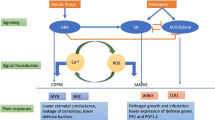Abstract
Genotype by environment interaction was investigated for sunflower grain yield in French official trials from two different networks. Genotype by environment interaction was described using cross-product terms from factorial regression. This modelling provided parsimonious descriptions of interaction: up to 20% of the sum of squares of interaction was explained using less than 7% of the degrees of freedom. It also made biological interpretation easier. Genotypic earliness at flowering by environmental earliness, and genotypic oil content by water deficit during the flowering period, appeared to be two repeatable interactions: in both data sets, early genotypes performed better in early environments while late genotypes gave much better yields in late environments, and the yield advantage of low-oil genotypes over high-oil genotypes was larger when water supply during flowering was non-limiting than in the case of water stress. Combined analysis of both data sets allowed us to compare patterns of interaction in both networks and to select a more robust model.
Similar content being viewed by others
Author information
Authors and Affiliations
Additional information
Received: 28 December 2000 / Accepted: 29 May 2000
Rights and permissions
About this article
Cite this article
Foucteau, V., El Daouk, M. & Baril, C. Interpretation of genotype by environment interaction in two sunflower experimental networks. Theor Appl Genet 102, 327–334 (2001). https://doi.org/10.1007/s001220051649
Issue Date:
DOI: https://doi.org/10.1007/s001220051649




